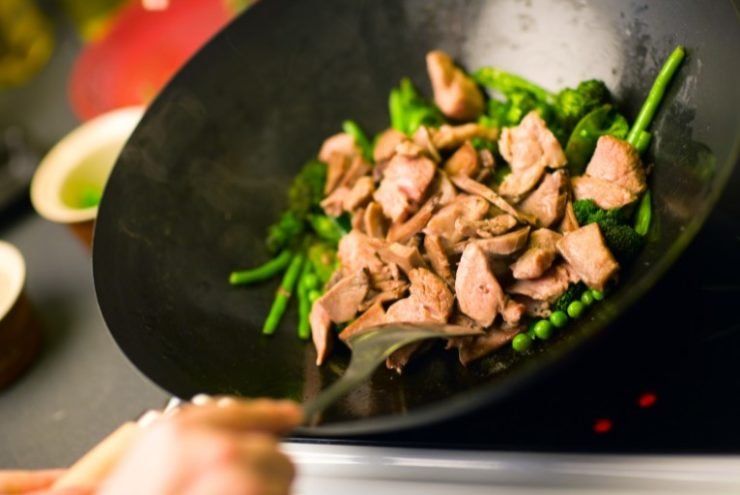Several of my professional cooking years were spent manning restaurant wok stations. And after using them for so long, I think an easier question to answer might be, what isn’t a wok used for?
If you’re not used to cooking with one, it can definitely take a bit of getting used to. But with a little practice, a wok can take the place of almost all the other pots and pans in your kitchen. So, how can a wok be used? Let me count the ways.
In This Article
7 Great Uses For A Wok
1. Stir Frying
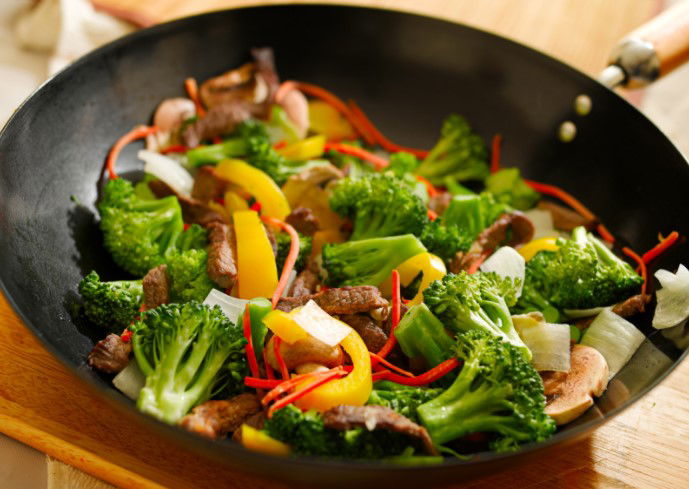
Stir frying might be what the wok is most well known for and is also perfectly designed to do. Stir frying is all about hot and fast cooking.
Traditional woks are relatively thin and have a round bottom with tall sloped sides. The round bottom sits close to or directly in a fire, which lets that part of the pan get extremely hot, with heat dissipating as you move up the sides.
This design allows you to efficiently toss and cook food quickly and evenly. As you toss a stir fry, the ingredients are also briefly exposed to the fire from your stove (if using a gas range or wok burner). This imparts a distinct taste to stir fry dishes known as wok hei (pronounced “hey”), or as I like to call it, the kiss of the dragon.
2. Deep Frying
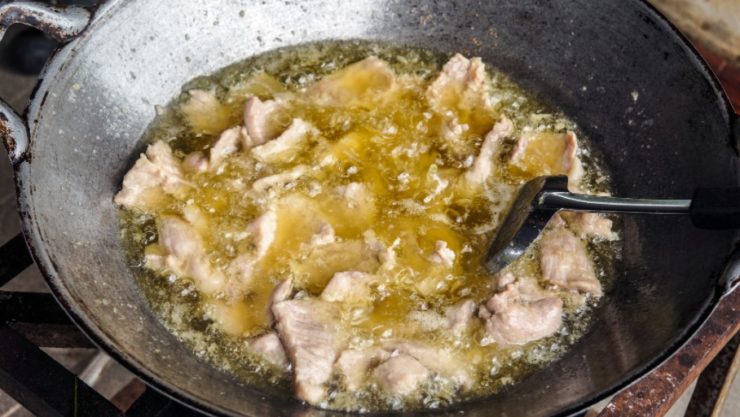
Deep frying involves cooking food completely submerged in hot fat. And the deep sloped sides of a wok make it the perfect pan for the job.
The shape allows you to use less oil than you would with a straight-sided pot or Dutch oven. But, you still get a very large surface area so you can fry a lot of food at once. You can also take advantage of the sloped sides by using them to gently slide ingredients into the oil which will reduce splashes and possible burns.

A Word Of Caution: Woks can be a bit less stable than standard flat-bottom cookware, especially when filled with liquid. So, take extra care when dealing with a wok full of hot oil. Try to avoid lifting and moving the wok until the oil has cooled and always use a wok ring for round-bottom woks.
3. Steaming
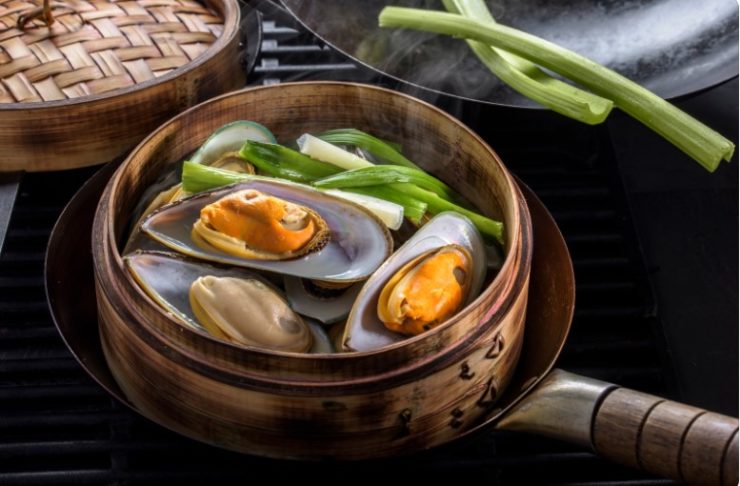
Steaming is another cooking technique that the wok does better than just about any other pot or pan. A simple bamboo steamer and a wok are a match made in heaven. You can stack several layers of them at a time which allows you to cook a large variety and quantity of food all in one go.
But, even without a dedicated steamer basket, a wok still excels at the task. You can use a simple wire rack or even a ring made from aluminum foil. Anything that will allow you to elevate your food above simmering water. Although with this method you will need a wok lid to keep the steam in.
4. Smoking
While it may not be the most common use for a wok, it can be used quite effectively as a smoker. I’m not talking about smoking a whole brisket for 18 hours, but rather adding a light but noticeable smokey flavor to anything from meat and fish to veggies and tofu.
All you need to do this is line your wok with foil or create a foil pouch to place your wood chips in. This will make cleanup easy and also protect the seasoning on your wok. Then you’ll need a way to elevate your food above the wood – perhaps that same rack you’ll use for your steaming setup – and a lid to keep the smoke in.
5. Blanching
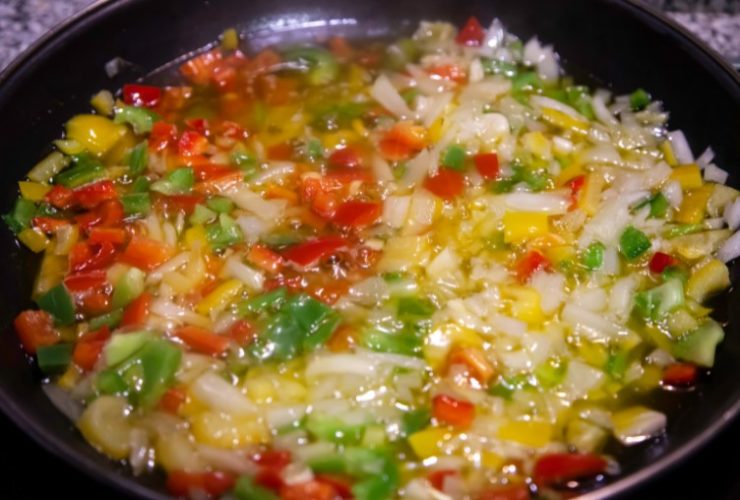
The large volume and wide opening of a wok make it great for holding large amounts of water. And that makes it the perfect tool for blanching vegetables or even cooking noodles.
You can fit a lot of food in at a time without overcrowding, and since woks are so wide at the top, it’s easy to remove items as soon as they are done cooking. Pair your wok with a powerful wok burner and you can blanch and cook without ever worrying about losing that boil.
6. Reducing

Whether you’re reducing something to thicken it or to concentrate its flavor, a wok is an excellent choice when you need to get the job done quickly.
The wide opening allows for rapid evaporation. While the rounded bottom will let you reduce liquids to very small amounts without burning. Something that can be more challenging in a pot or pan with a wide, flat bottom.

Flame Management: If you’re working with a wok burner or gas range, it can be important to make sure your flame doesn’t extend higher than the liquid you’re reducing. If your flame is too high it can quickly lead to a burnt sauce, especially if it contains a lot of sugar.
7. Simmer And Poach
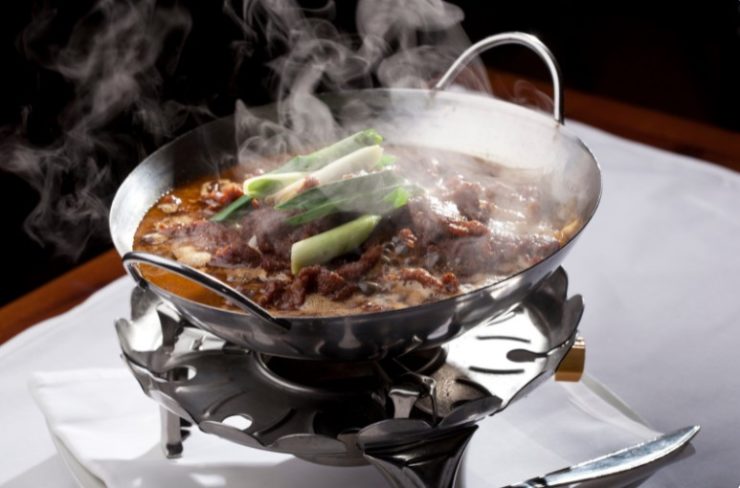
Simmering and poaching are two more wok uses that take advantage of the deep and wide shape of the wok.
The wok is great for simmering soups or for gently poaching meat, fish, or vegetables. Some Chinese recipes will also call for wok braising. But this is actually more like simmering than the long, low, and slow braising most of us are used to doing in a pot or pan like a Dutch oven.
Frequently Asked Questions
Can I Use A Wok On An Electric Stove?
Yes, you can use a wok on an electric stove but it must be a flat bottomed wok. A round bottom wok will not work on an electric stove even with a wok ring.
Can I Use A Wok On A Gas Stove?
Yes, heating a wok with a gas flame is one of the best ways to use a wok. This allows you to get that distinct wok flavor (wok hei) from the flames on the stove. For the very best results pair your wok with a powerful outdoor wok burner.
Is A Non-Stick Or Carbon Steel Wok Better?
Carbon steel is the best material for a wok. While non-stick woks are easy to clean and maintain, they are not as durable or versatile as carbon steel. And, they can’t be used with the high heat necessary for some wok dishes.
